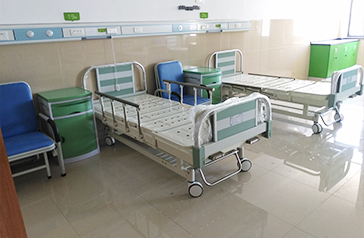Welcome to our websites!
physiotherapy and rehabilitation equipment
Physiotherapy and Rehabilitation Equipment Enhancing Recovery and Quality of Life
Physiotherapy and rehabilitation are critical components of healthcare, focusing on restoring movement and function in individuals who have suffered injuries, surgeries, or chronic conditions. Central to this field is the use of specialized equipment designed to improve patient outcomes, facilitate healing, and promote independence. This article explores various types of physiotherapy and rehabilitation equipment, their benefits, and the latest advancements in technology that enhance treatment effectiveness.
Types of Physiotherapy Equipment
1. Exercise Balls Known for their versatility, exercise balls are commonly used to improve core strength, balance, and stability. Physiotherapists often incorporate them into rehabilitation programs for patients recovering from injuries or surgeries, as they provide an unstable surface that challenges the body’s equilibrium.
2. Resistance Bands Resistance bands are a staple in rehabilitation settings. They come in various levels of resistance and can be used to perform strength training exercises without heavy weights. This makes them especially useful for individuals who require low-impact rehabilitation as they help in building strength and flexibility.
3. Therapeutic Ultrasound Machines These devices utilize sound waves to promote tissue healing. By increasing blood flow and reducing inflammation, therapeutic ultrasound can significantly decrease pain and speed up the recovery process. It is often used for conditions like tendonitis and muscle strains.
4. Electrical Stimulation Devices Transcutaneous Electrical Nerve Stimulation (TENS) units and electrical muscle stimulators are widely employed in physiotherapy. These devices send electrical impulses to the skin or muscles to stimulate nerves, reduce pain, and improve muscle function. They are particularly beneficial for patients with chronic pain or muscle weaknesses.
5. Hydrotherapy Equipment Water-based rehabilitation techniques have gained popularity due to their effectiveness. Aquatic therapy utilizes the buoyancy and resistance of water to ease the strain on joints while exercising. Equipment like underwater treadmills and aquatic dumbbells are commonly used to enhance movement without the risk of injury that often accompanies traditional exercises.
physiotherapy and rehabilitation equipment

Importance of Rehabilitation Equipment
The right rehabilitation equipment can significantly influence a patient's recovery trajectory. Each tool is designed with a specific function in mind, allowing therapists to tailor treatment plans to individual patient needs. Factors such as the type of injury, the recovery stage, and overall health play vital roles in determining the appropriate equipment.
Moreover, these tools not only facilitate physical healing but also empower patients. By providing mechanisms for self-guided rehabilitation exercises, patients can participate in their healing process, fostering a sense of control and motivation. This active involvement can enhance psychological well-being, which is crucial during recovery.
Advancements in Technology
The field of physiotherapy and rehabilitation equipment is continuously evolving. New advancements in technology have introduced innovative solutions that make treatments more effective and efficient. Virtual reality (VR) and augmented reality (AR) technologies are making their way into rehabilitation practices, providing engaging and immersive environments for patients to perform exercises. These technologies can enhance motivation and engagement, leading to better outcomes.
Additionally, wearable devices equipped with sensors are increasingly used to monitor patients' movements and progress in real-time. This data-driven approach allows physiotherapists to adjust treatment plans based on objective performance metrics, ensuring a personalized rehabilitation experience.
Conclusion
Physiotherapy and rehabilitation equipment play an essential role in the recovery process for individuals facing various physical challenges. From basic tools like exercise balls and resistance bands to advanced technologies like VR systems and smart wearables, these resources enhance therapeutic interventions and improve patient outcomes. As we continue to innovate and integrate technology into physiotherapy practices, the future looks promising for rehabilitation, offering hope for improved recovery and quality of life for patients worldwide. Whether addressing minor injuries or aiding in post-surgical recovery, the right equipment is vital in making rehabilitation a successful journey.
-
Transforming Healthcare with Hospital FurnitureNewsJun.24,2025
-
Rehabilitation EquipmentNewsJun.24,2025
-
Mobility and Independence with WheelchairsNewsJun.24,2025
-
Freedom of Mobility with Our Rollator WalkersNewsJun.24,2025
-
Comfort and Independence with Commode ChairsNewsJun.24,2025
-
Bathing Safety and Independence with Shower ChairsNewsJun.24,2025
-
Navigating the Wholesale Landscape of Electric Mobility Solutions: Key Considerations for Power Wheelchair DealersNewsJun.10,2025











